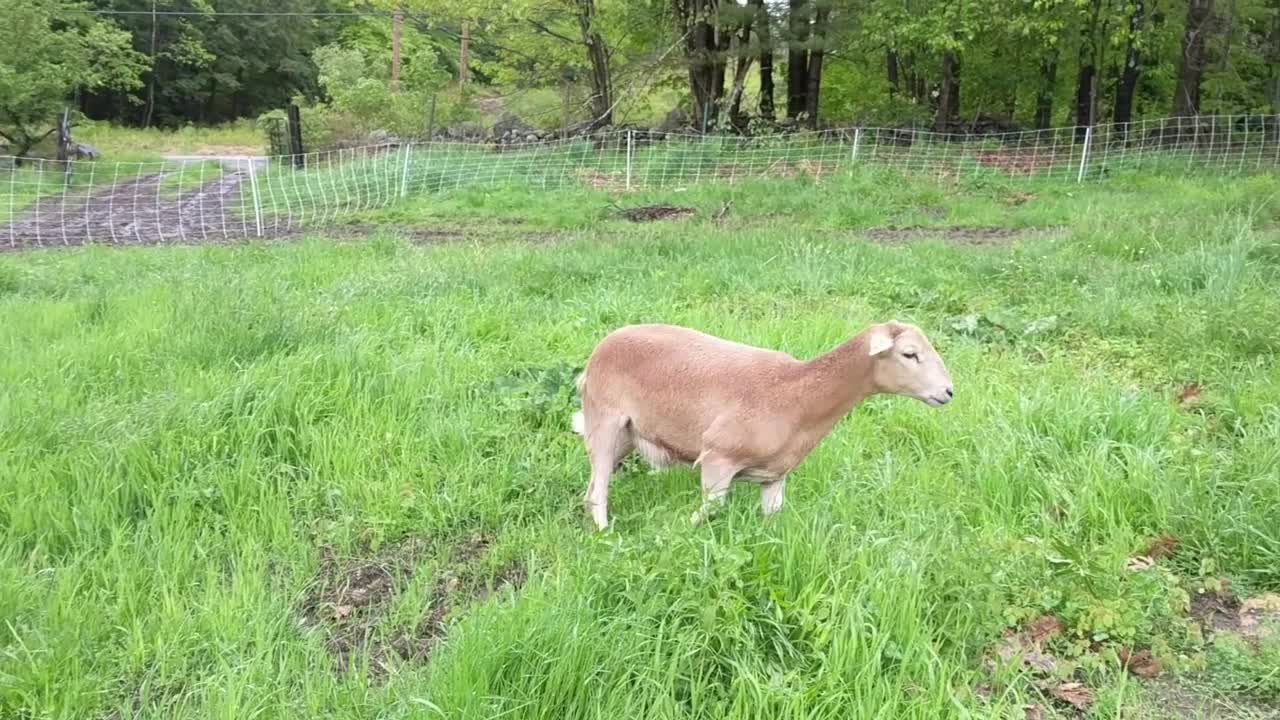This is the sheep riot I come home to if I underestimate the size of the flock’s grazing rotation for the day.
Sorry for the shaky video as I walk backwards with hungry sheep bearing down on me….
This is the sheep riot I come home to if I underestimate the size of the flock’s grazing rotation for the day.
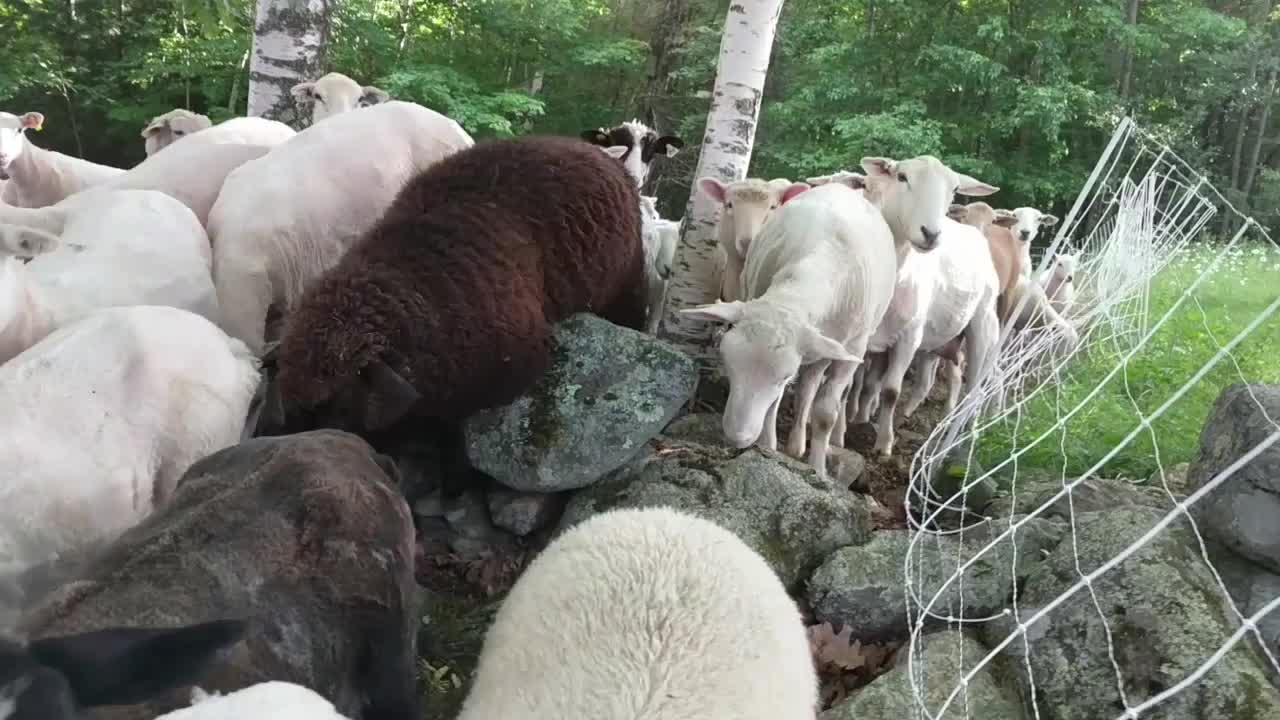
Sorry for the shaky video as I walk backwards with hungry sheep bearing down on me….
I figured I’d eventually come around to shoveling shit — can’t really be a farmer without it. The shearer is coming tomorrow to relieve the flock of its wooly burden, and he needs a flat, clean place to work, so yesterday I cleaned out a section of the lambing barn for him.
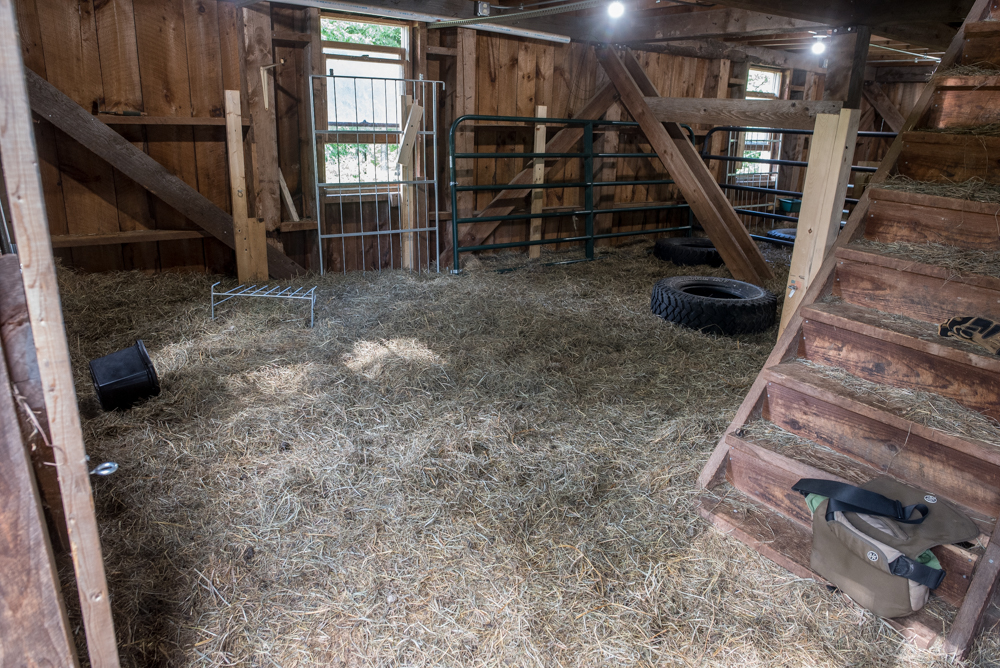
I didn’t realize how deep the bedding had built up, but I managed to fill the tractor bucket seven times over.
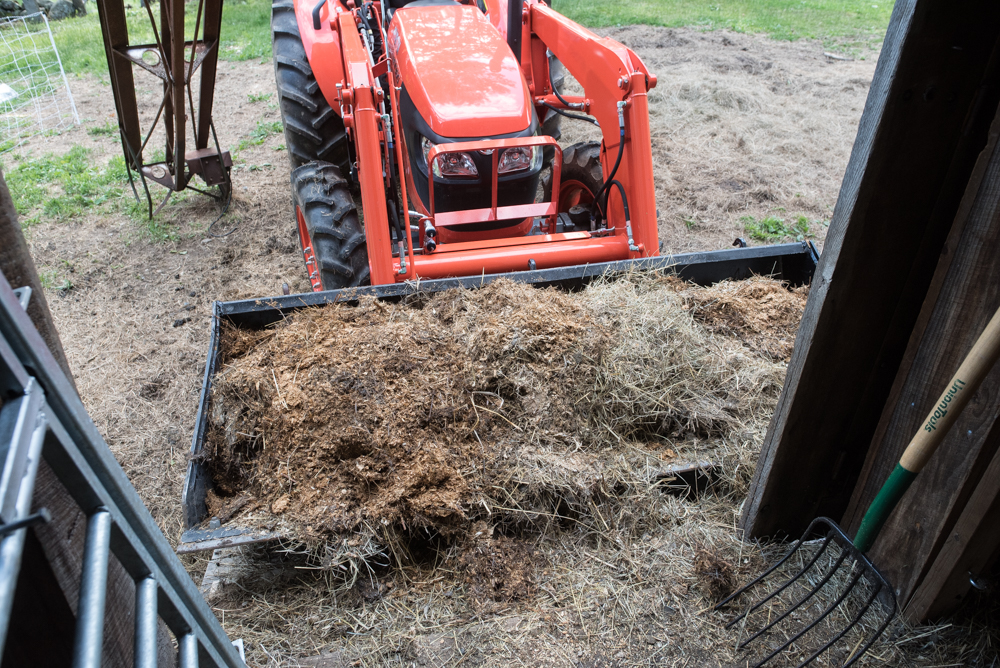
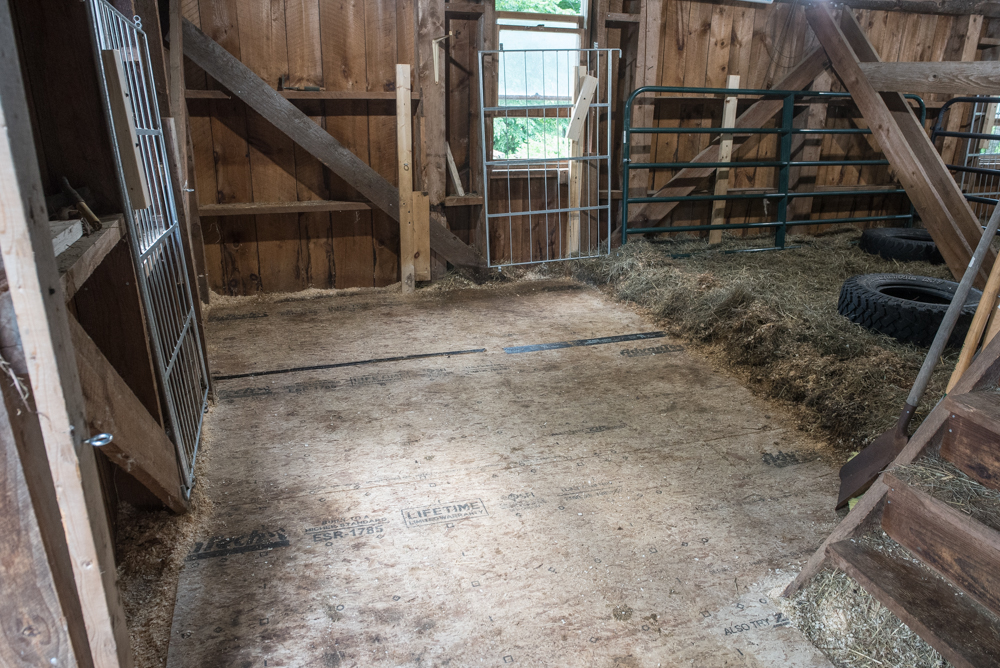
I also got to make a significant contribution to the compost pile in one of the gardens.
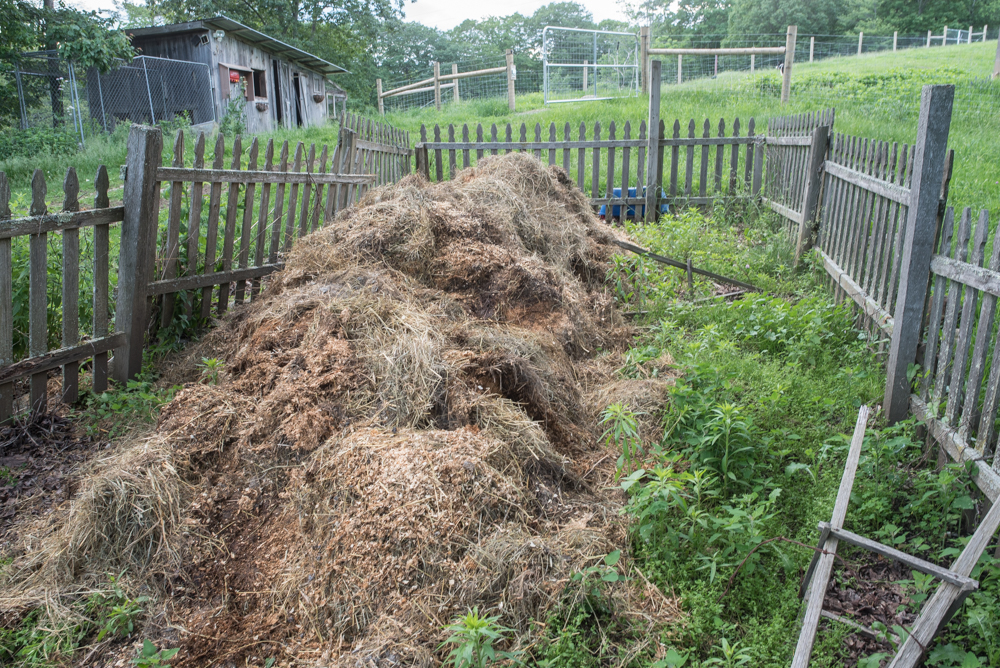 Then today’s project was to set up the barnyard for sheep-sorting and bring the flock down from the pasture. While I shoveled shit alone, I was grateful to have help today from my shearer, Bruce Clement, and friend Wendy Pelletier in setting up the temporary handling system and moving the sheep.
Then today’s project was to set up the barnyard for sheep-sorting and bring the flock down from the pasture. While I shoveled shit alone, I was grateful to have help today from my shearer, Bruce Clement, and friend Wendy Pelletier in setting up the temporary handling system and moving the sheep.
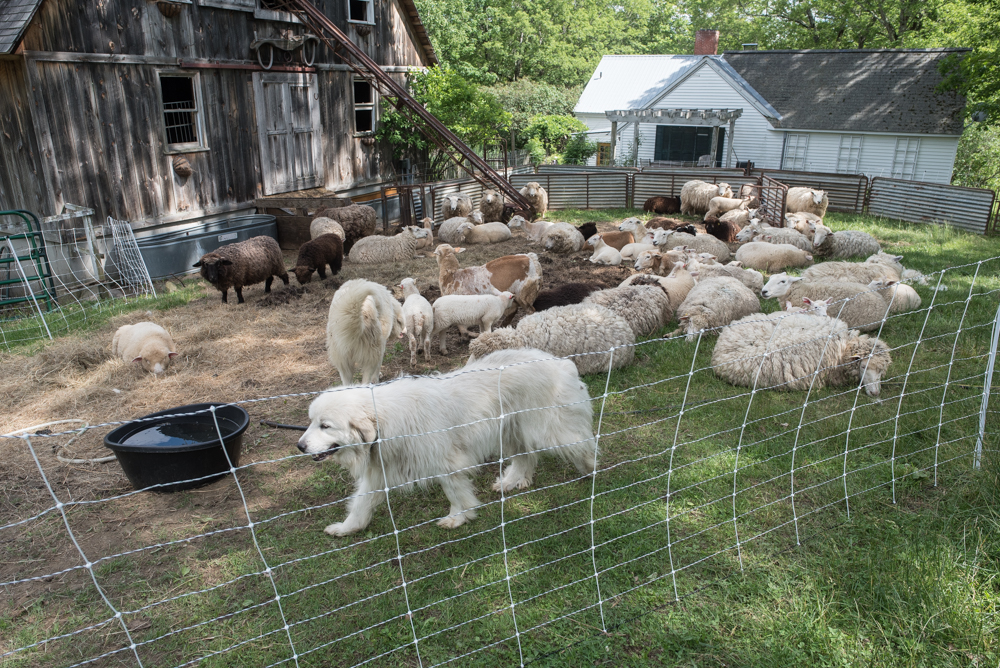 Cleo and Bravo of course moved with their flock.
Cleo and Bravo of course moved with their flock.
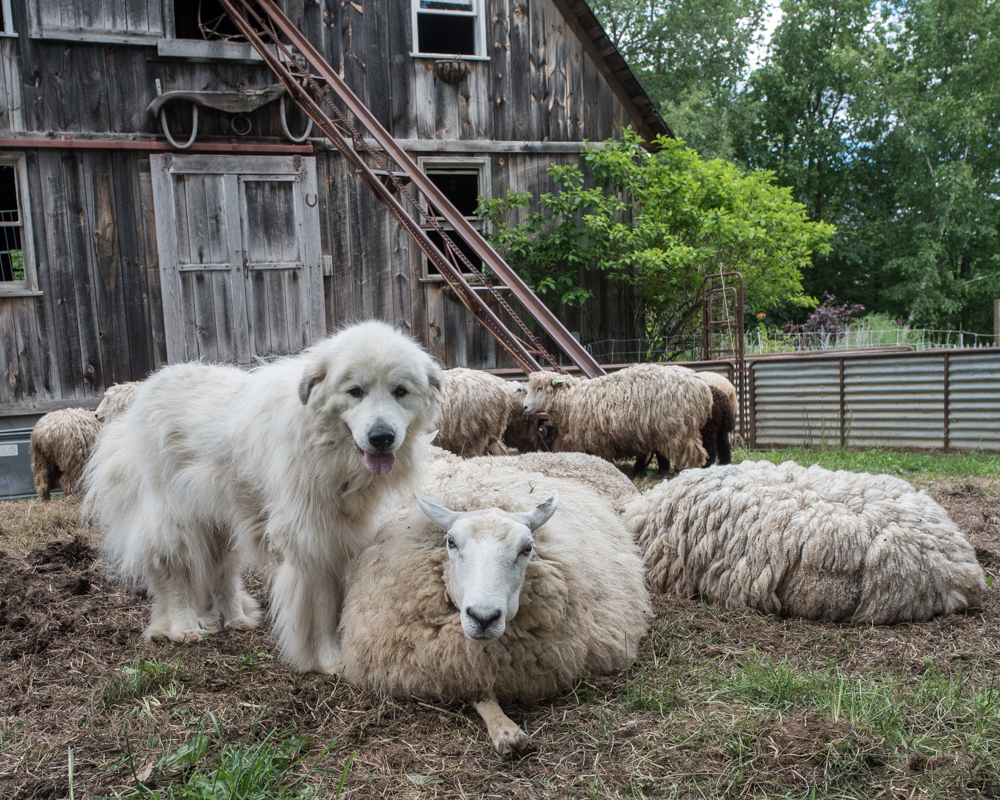
Tagged: barnyard, bravo, Bruce Clement, Cleo, handling system, herding, preparation, shearing, sheep, shoveling shit, sorting, Wendy Pelletier
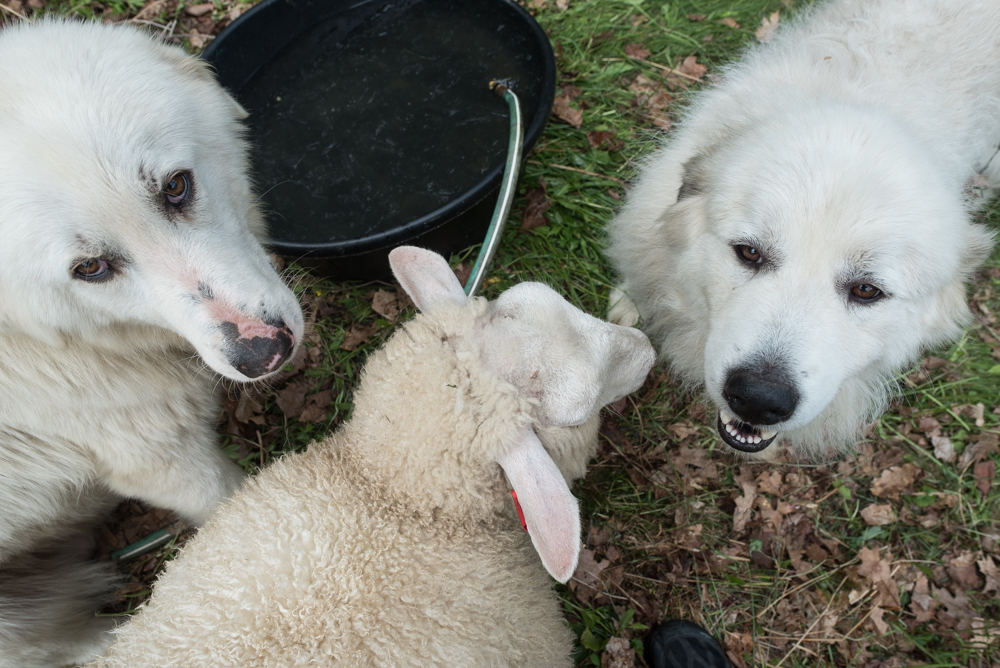 All three competing for my attention. The ewe lamb is particularly persistent.
All three competing for my attention. The ewe lamb is particularly persistent.
Tagged: 702, attention, bravo, Cleo, competition, ewe lamb, Great Pyrenees, livestock guardian dogs, maremma, pasture
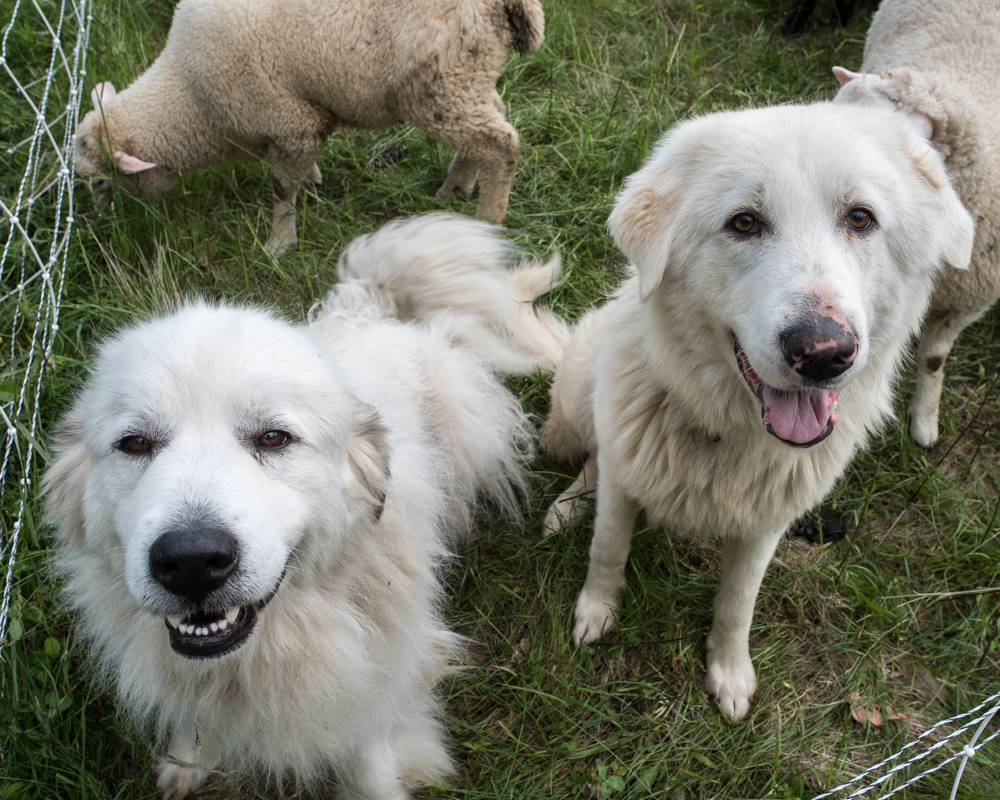
It was a risk to bring Cleo to the farm — I didn’t know how she’d do with Bravo, with the border collies, with the sheep, with me, with living outside full time. I had a feeling that it would work out eventually, but I’ve been shocked at how many things have come together in a short time. She and Bravo clicked right away, but she was still pretty reserved with him at first. Now she takes the lead on their post-prandial romps every evening.
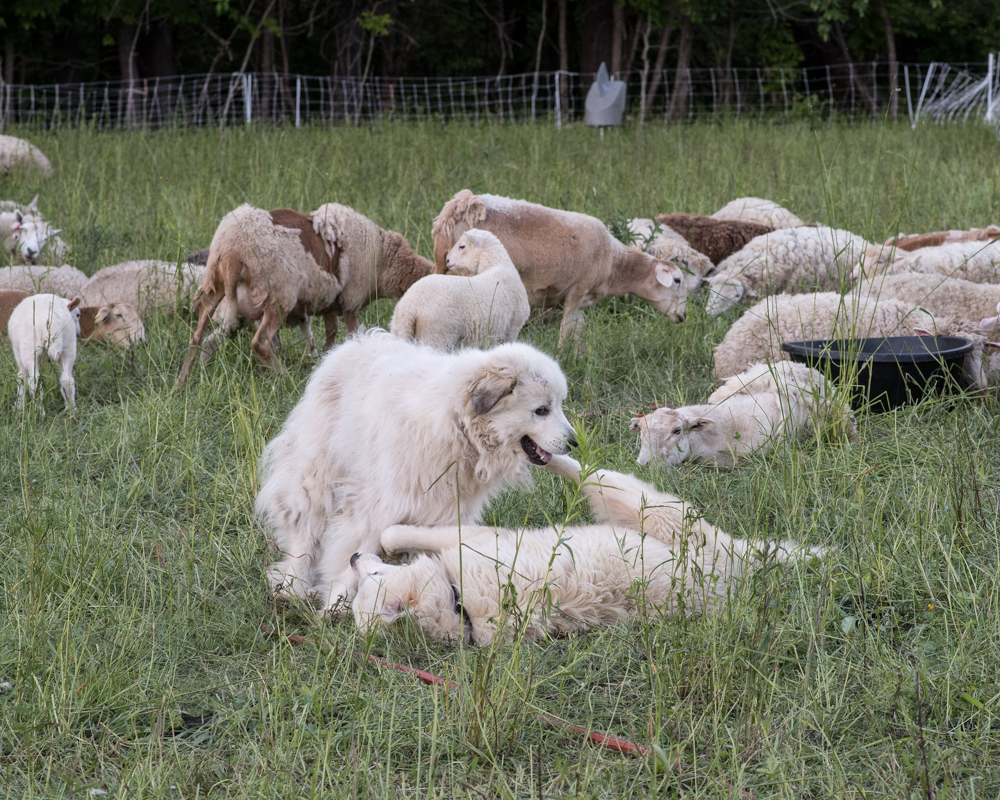
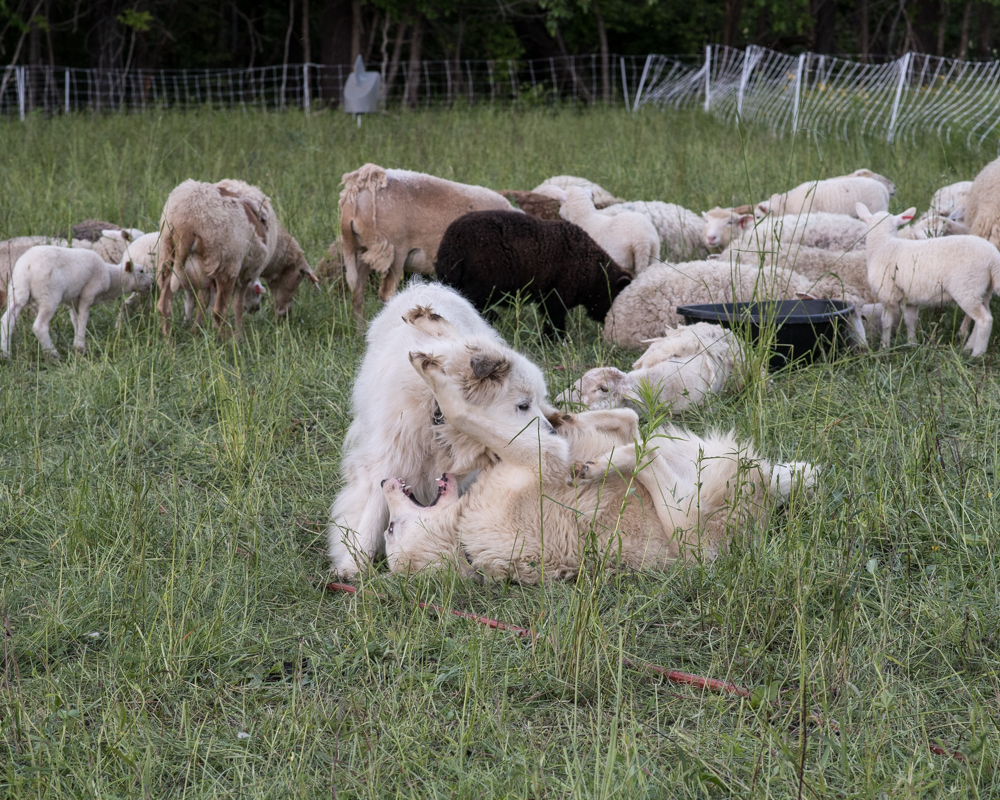 I was worried that she might get protective of the sheep when the border collies were moving the flock, since she’s never worked with herding dogs, but she’s been completely relaxed during our twice-daily moves to new pasture. But perhaps the biggest change has been in the way the sheep relate to their canine protectors. My sheep had never been around a guardian dog before Bravo arrived, and they were understandably wary of him at first. While things had certainly improved, I still saw the sheep get tense when Bravo moved around them. Since Cleo’s arrival, that tension has disappeared. I’m not sure if she has calmed Bravo down, or calmed the sheep down, or if her presence somehow fixes an imbalance — single male dog is scary but male-female pair is not? — but the sheep now intermingle and brush shoulders with the dogs with absolute ease. Whatever the case, I’m grateful that she joined the team.
I was worried that she might get protective of the sheep when the border collies were moving the flock, since she’s never worked with herding dogs, but she’s been completely relaxed during our twice-daily moves to new pasture. But perhaps the biggest change has been in the way the sheep relate to their canine protectors. My sheep had never been around a guardian dog before Bravo arrived, and they were understandably wary of him at first. While things had certainly improved, I still saw the sheep get tense when Bravo moved around them. Since Cleo’s arrival, that tension has disappeared. I’m not sure if she has calmed Bravo down, or calmed the sheep down, or if her presence somehow fixes an imbalance — single male dog is scary but male-female pair is not? — but the sheep now intermingle and brush shoulders with the dogs with absolute ease. Whatever the case, I’m grateful that she joined the team.
Tagged: bravo, Cleo, completion, farm, Great Pyrenees, livestock guardian dogs, maremma, pasture, relaxed, sheep
Bill Fosher claims that eventually I’ll develop such muscle memory that electronet leaps unbidden from my arms and sets itself into the ground. I’m not there yet. The portable electric fencing I use to enclose grazing areas for the flock is a crucial part of my operation, but it’s also become my principal preoccupation and adversary. It’s a straightforward enough system: a solar fence charger and rolls of plastic net fencing with stainless steel conductors woven through.
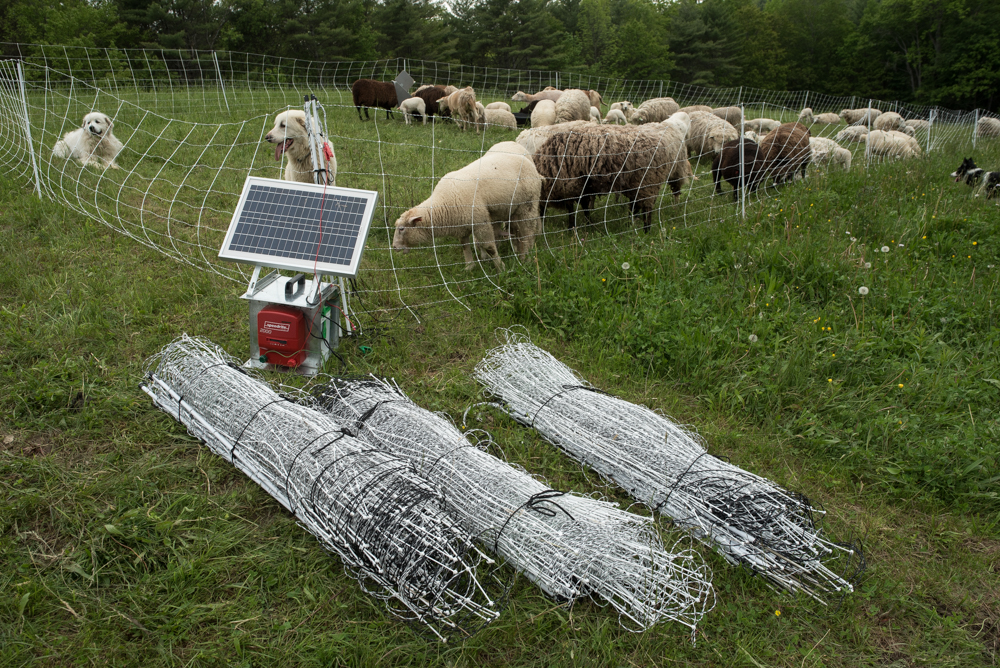 The details, though, reveal that the system was designed by sadists. The rolls of net are sized so that they can be comfortably carried and deployed by someone 6 inches taller and 30% stronger than the one doing the work. The net itself is designed like a ecologically friendly fishing net, allowing squirrels to pass through unimpeded but optimized to snare farmers’ footware. And the fence charger has a handle temptingly located in such a way that no anatomically intact human could use it.
The details, though, reveal that the system was designed by sadists. The rolls of net are sized so that they can be comfortably carried and deployed by someone 6 inches taller and 30% stronger than the one doing the work. The net itself is designed like a ecologically friendly fishing net, allowing squirrels to pass through unimpeded but optimized to snare farmers’ footware. And the fence charger has a handle temptingly located in such a way that no anatomically intact human could use it.
I’ve been setting up big squares of electronet — 164 feet to a side — and then subdividing them into 7 strips, each worth about 12 hours of grazing. This morning I moved the sheep in to the last strip of the previous square, so this evening I needed to set up a new one to start the 3½ day cycle over again. I set up the perimeter first, making sure that my corners all met up before setting the fence upright.
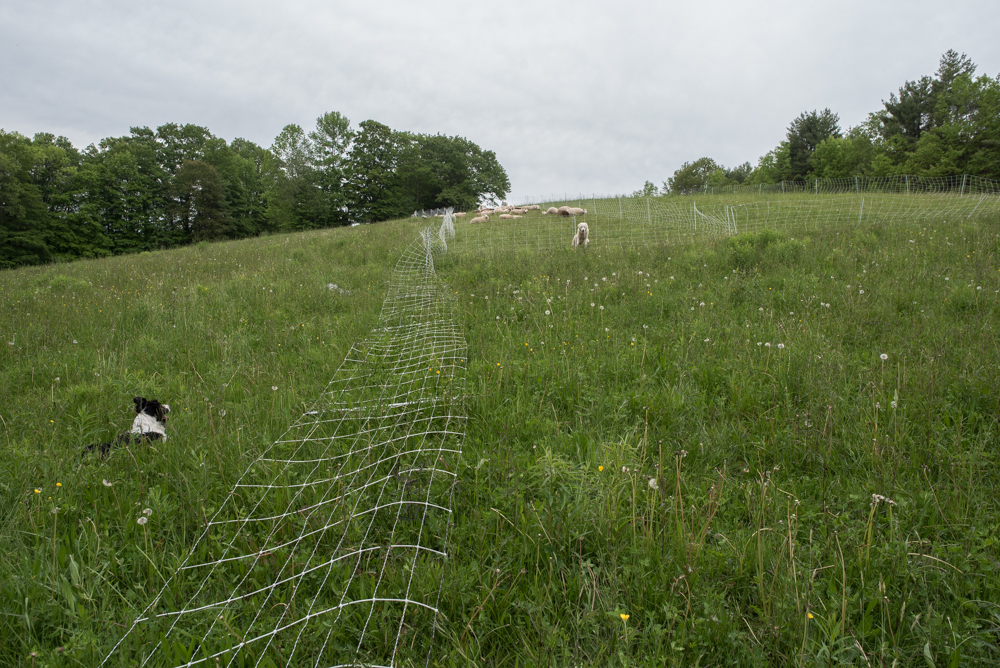 When the big square was complete, I set off the first grazing strip.
When the big square was complete, I set off the first grazing strip.
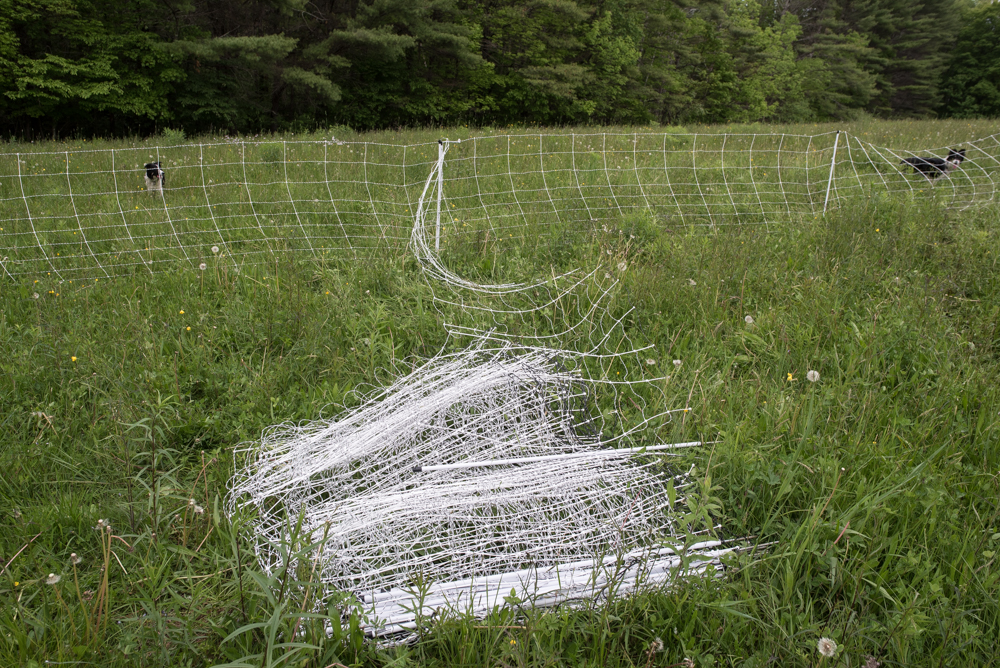
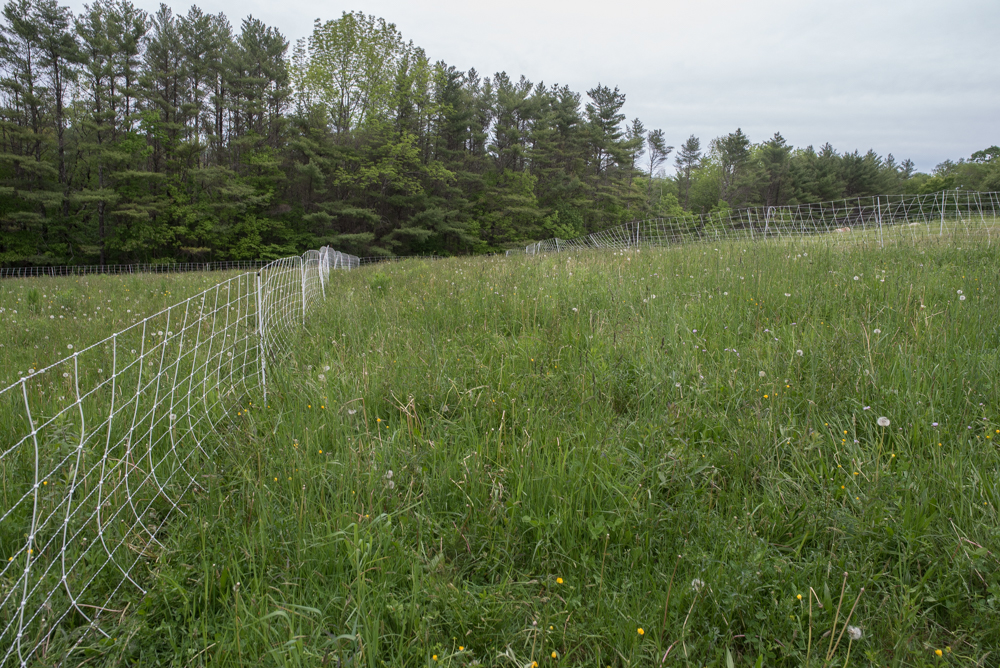 And then moved the sheep down to the fresh pasture.
And then moved the sheep down to the fresh pasture.
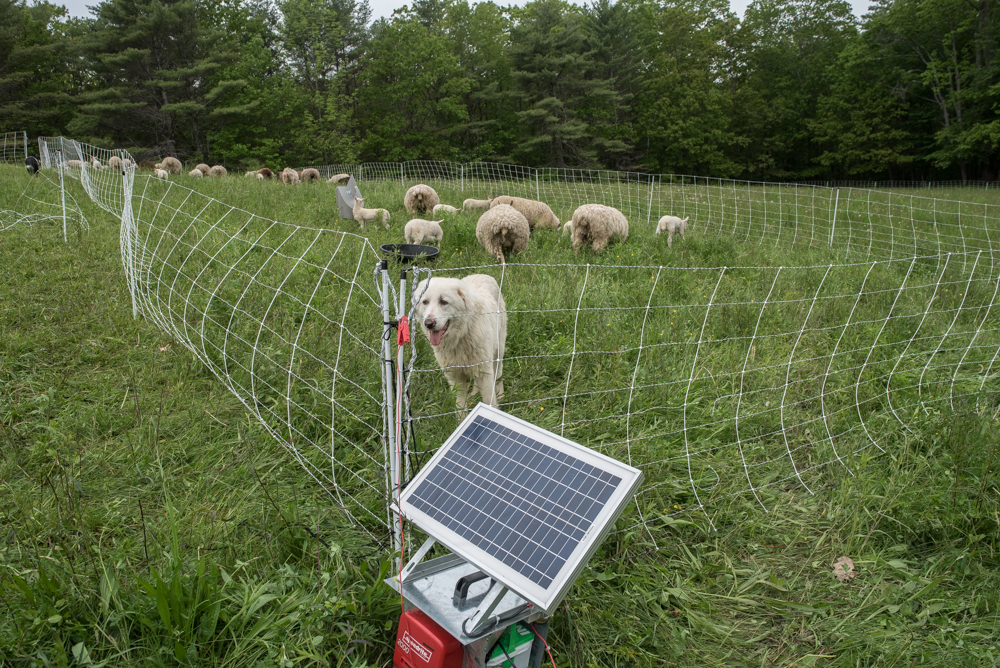 If the sheep eat as much as I expect over night, I’ll move them to the adjacent strip in the morning. Despite my kvetching, I only trip and fall on the net every third or fourth day now. Bill is still much faster than me setting it up, but I’m slowly gaining on him.
If the sheep eat as much as I expect over night, I’ll move them to the adjacent strip in the morning. Despite my kvetching, I only trip and fall on the net every third or fourth day now. Bill is still much faster than me setting it up, but I’m slowly gaining on him.
Tagged: Bill Fosher, bravo, Cass, Chloe, electronet, grazing, pasture, rotational grazing, sadists, sheep, solar energizer, Wellscroft
My daily rhythms with the sheep are now all about grazing rotations — how big an area to give them, how often to move the fence, worrying whether I’m doing it right. The big picture is that sheep consume pasture most efficiently if they’re a little crowded and hungry, so they’re less likely to be picky and instead eat a bit from all of the available plants. Pasture is most productive if it’s grazed uniformly for a short time (ideally before it goes to seed) and then left to recover. The grass is also happier if the sheep don’t eat too much — 6-8″ of remaining leaf height allows it to continue to photosynthesize efficiently and grow back quickly.
My flock of 65 sheep is constant*, but the quality of pasture varies across the farm — some areas support much more plant density than others. So every time I set up a grazing area, I’m trying to figure out how much sheep food it contains and how long the sheep should stay so that they eat just enough but not too much. My goal is to move them twice a day, the sweet spot between efficient grazing and shepherd insanity, according to Bill Fosher. I’m starting to get better at all the necessary guesstimates, but I still sometimes let the sheep overgraze (too much time for the available forage, so they chew the plants down too far for quick pasture recovery) or undergraze (too much area for the number of sheep, so that they start to eat selectively, overgrazing their favorites and ignoring the plants they like less, the all ice cream and no broccoli approach).
This morning, I erred a bit on the side of overgrazing, leaving the sheep a few hours longer in their overnight section than I should have. Aside from a few mature grass stems that they disdain, they had eaten everything down to about 4 inches.
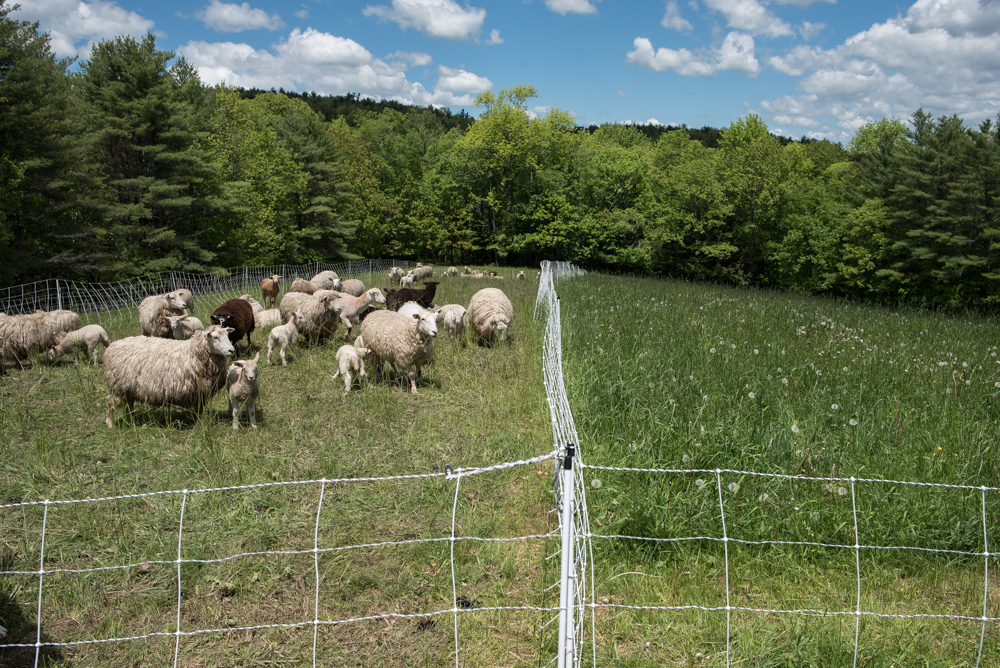
They get very antsy as they sense that I’m about to let them move to the new section. I have the electricity turned off to the fence at this point so I can open a section without getting zapped, and I’m afraid that the sheep are starting to figure out when the fence is electrified and not. I worry that one day they’ll just push their way to freedom if I don’t move them quickly enough. Bravo and Cleo were leading the charge this afternoon.
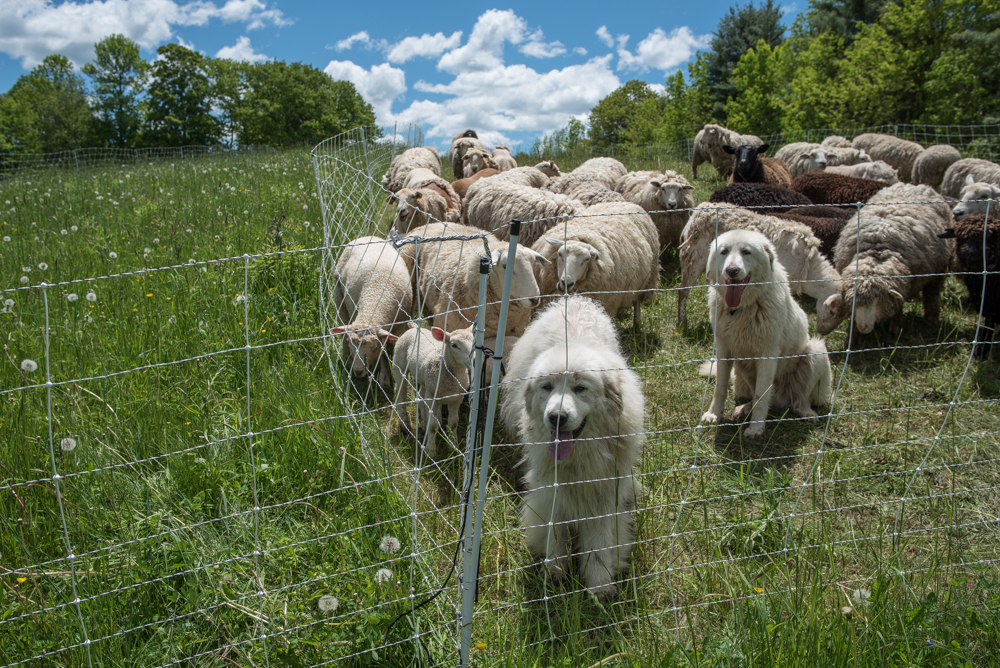
And once the sheep are in the new grass, all the tension disappears.
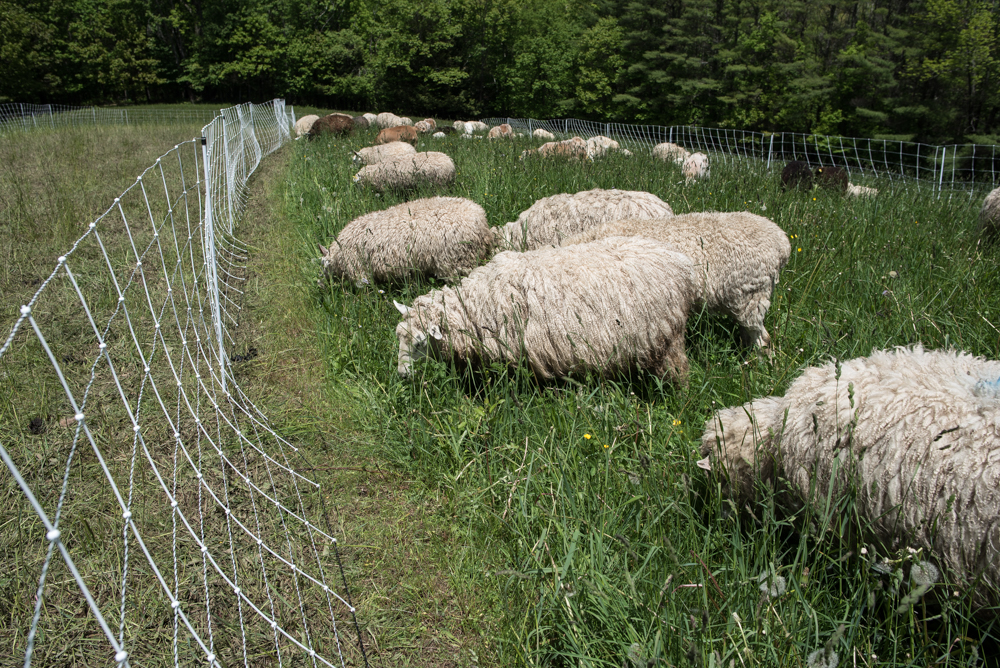
____________________
*While the number of sheep is constant, their consumption of forage really isn’t. As the lambs grow, their rumens start to develop and they start eating grass in addition to milk. And the ewes’ lactation volume changes as the lambs grow (peaking around 45-60 days after birth), so their nutritional needs change accordingly. All the variables are in flux.
I got an email from my friend and neighbor Roger Sweet yesterday entitled “mystery creature.” He attached a photo from another neighbor’s game camera showing part of a large dog-like creature and asked if it might be Bravo.
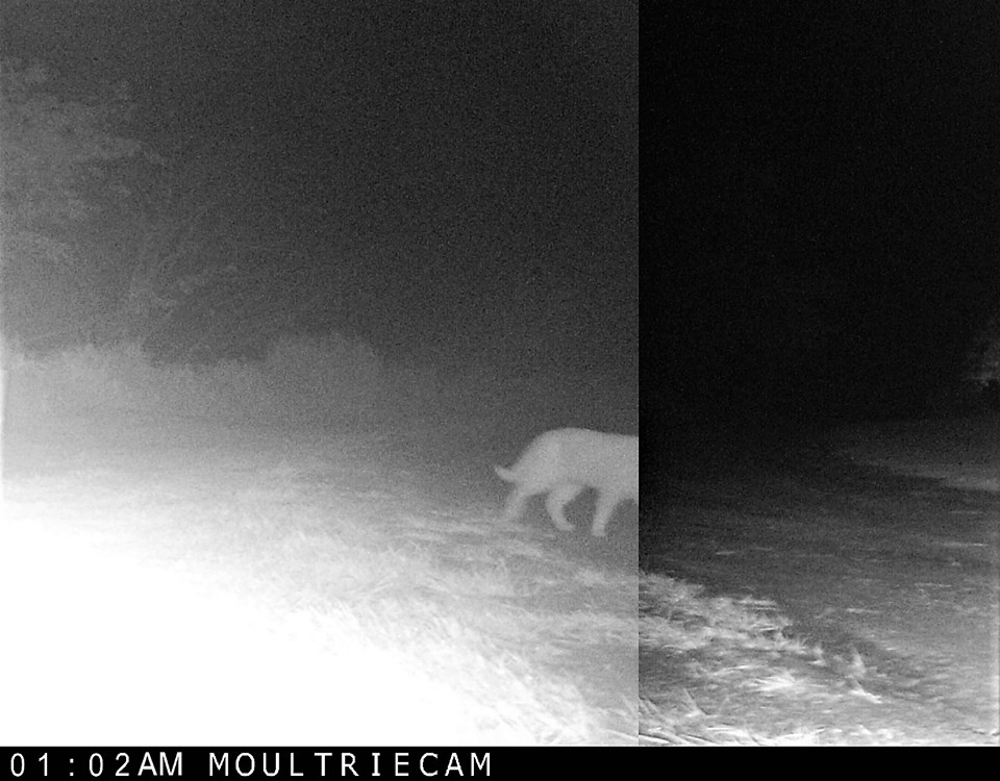
As I was setting up a new grazing area for the sheep in the evening, I was thinking that I would write Roger a response saying that Bravo is always behind electric fencing, so there was no possibility that he could be the mystery creature. Then Bravo jumped over the fence and came running over to me with a big smile. I hadn’t turned on the electricity yet, so I led Bravo back to the enclosure with the sheep and ran over to turn on the fence charger. Moments later he was back, again with his adolescent Maremma smile. We repeated this game a couple more times until I was convinced it was a hopeless project to keep him in. It was raining and getting dark, and I was out of ideas; I’d try to deal with Bravo in the morning. And I was no longer clear that he wasn’t the mystery creature captured by the game camera more than a mile away from our farm.
This morning, Bravo was waiting for me in the enclosure with the sheep, as he has every morning since I started grazing rotations.
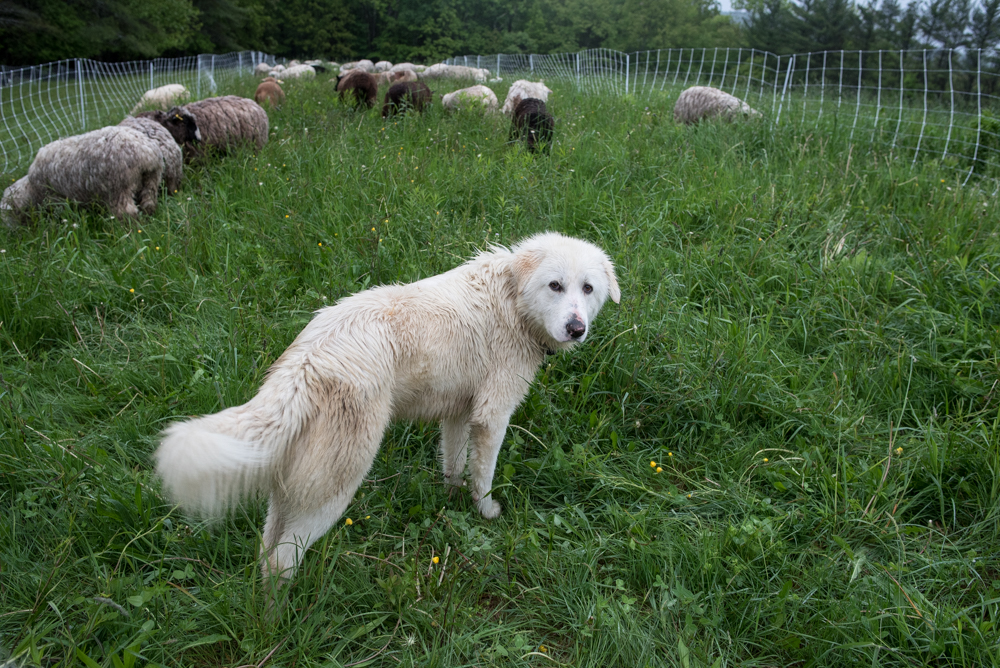
My guardian dog had demonstrated that the electronet couldn’t contain him but he nevertheless chose to return to his sheep. It’s clear that he’s developed a strong connection to his flock, but now I’m left to wonder what he does every night between dinner and breakfast. I’m trying to convince myself that the mystery creature is much too stocky to be Bravo, but can’t quite get over the ambiguity of the low-resolution image. I suppose I could get Bravo some kind of GPS tracking collar, or I could just imagine the nighttime adventures he might be having.
Cleo continues to surprise me. At her previous farm, she was slow to warm to new people, often needing several encounters before she felt comfortable enough to approach someone unfamiliar. Since she’s gotten here, she seems much more accepting of folks I introduce to her. My friend Kathy came to visit yesterday, and within seconds of meeting Cleo, they were best buddies.
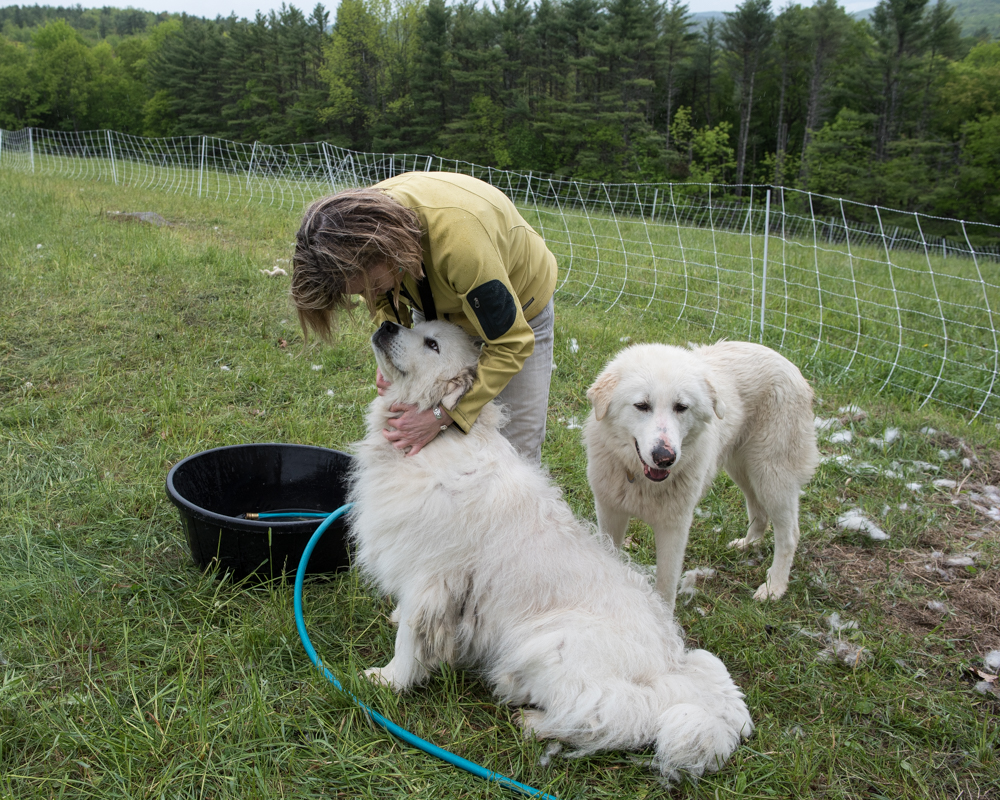
I’m curious if the change of circumstances somehow relaxed Cleo (not what I would have expected!); or if so far she feels less burden of responsibility for this new farm and its residents, and so she can be more trusting of visitors. It often takes an adult dog a full year to completely settle into a new life, so I imagine her behavior will continue to evolve.
Tagged: bravo, Cleo, Dogs, electronet, Great Pyrenees, Kathy, livestock guardian dog, maremma, pasture, settling in, smile, visitor
Ever since Bravo arrived, I’ve had a sense that he would be happier and more productive with a partner. I suspect that some of his less-savory behavior was motivated by boredom (though some was certainly the inherent idiocy of a young male Maremma); he was previously paired with an older female Maremma at Dancing Ewe Farm. Experts also argue that a bonded male-female pair provide the best protection — convincing predators (coyotes, mostly, around here) that the farm is already the home territory of a pair of canids and should thus be avoided.
I’d put the word out widely that I was looking for a second guardian dog, and after several false leads, I brought home Bravo’s new girlfriend* today.
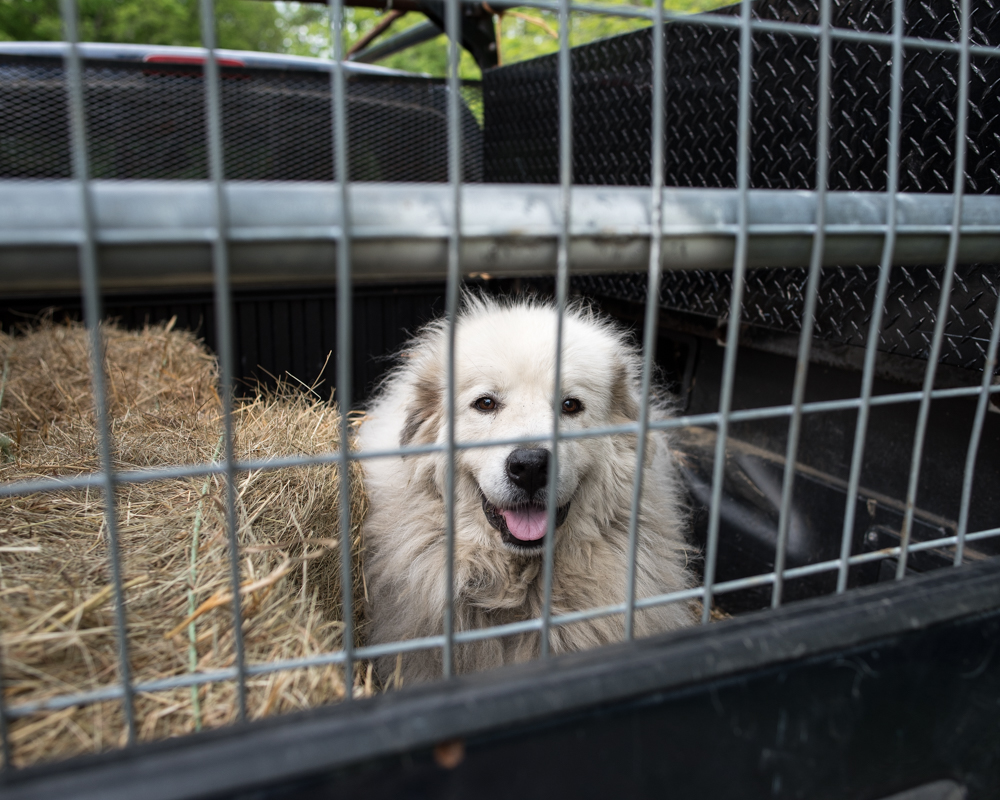
Cleo is a 6-year-old Great Pyrénées who had been guarding goats at Willow Moon Farm in Vermont; the dairy is shutting down, so Cleo needed a new place to work. Since she had a long history as a successful livestock guardian, I was confident that Cleo would fit in here, but I was concerned about how the introduction to Bravo, the sheep, and the border collies would go. So far, she and Bravo seem to be delighted with one another, the sheep are relaxed around the two of them, and there were no sparks with the BCs.
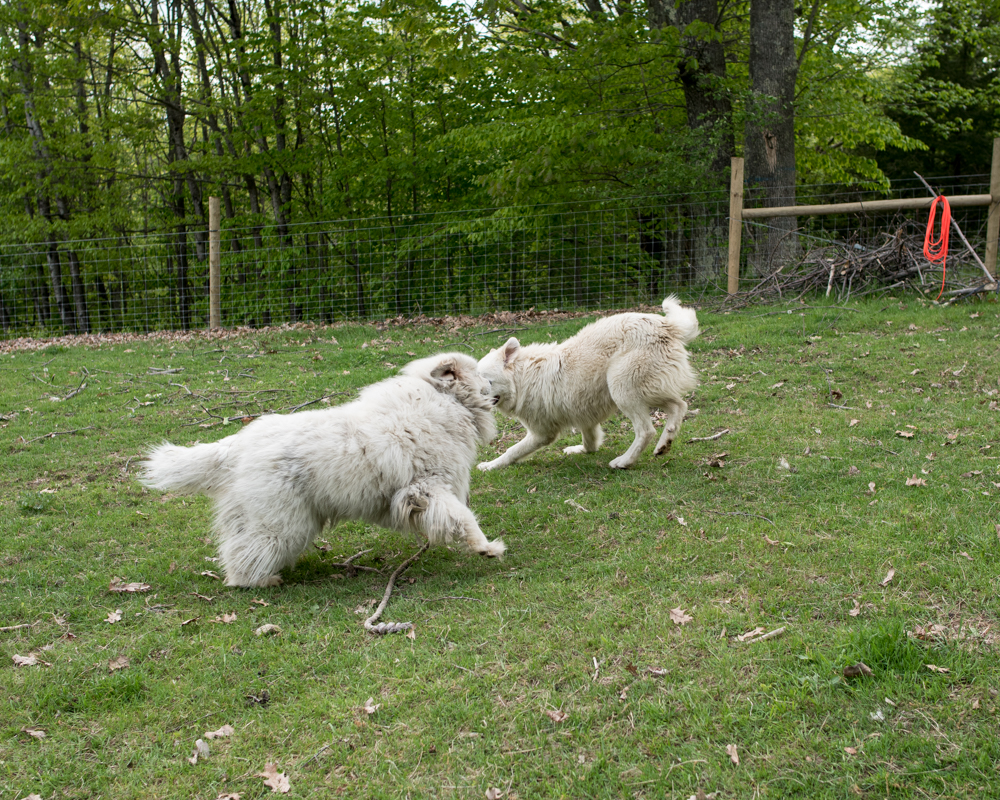
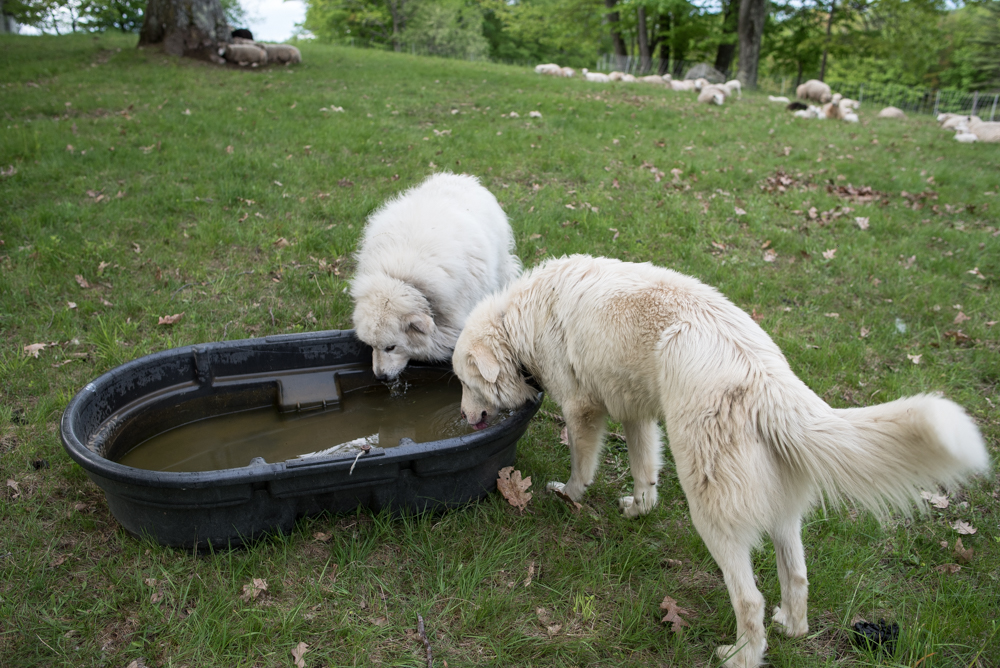
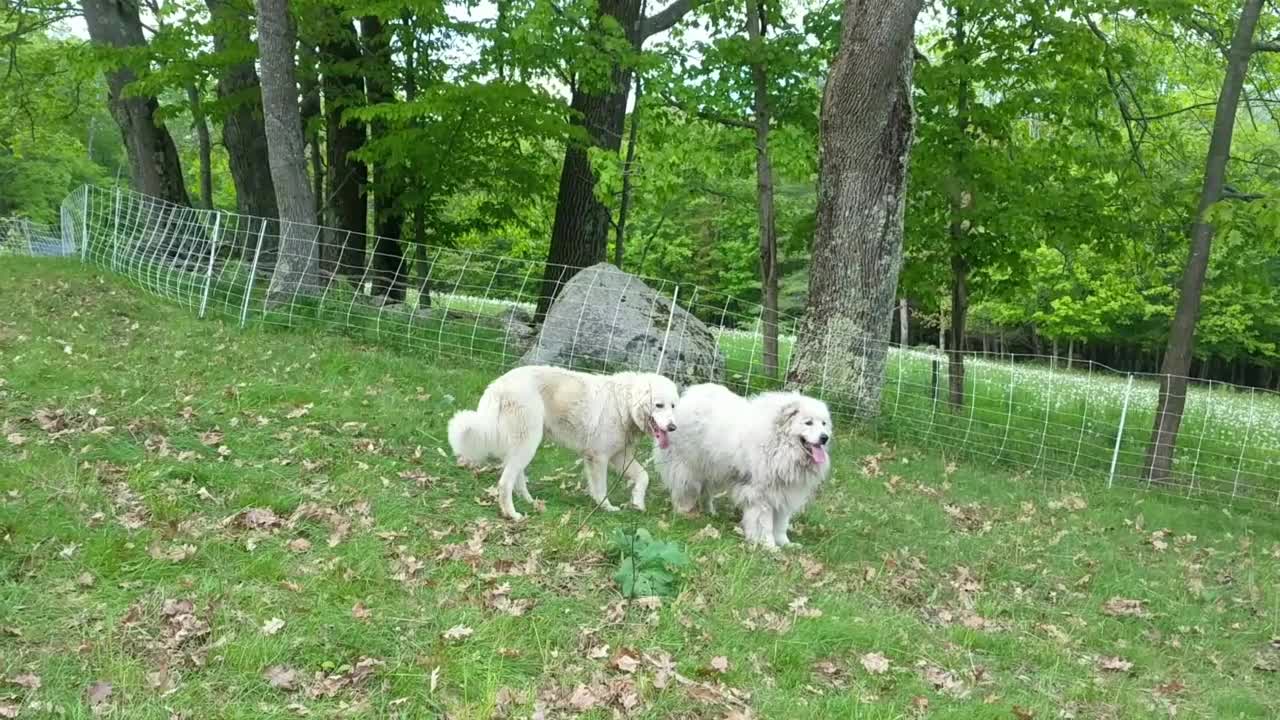
______________
*Cleo is spayed, so girlfriend is accurate only in its most reductive sense.
Tagged: arrival, bravo, Cleo, first day, Great Pyrenees, introductions, livestock guardian dog, maremma, pasture, sheep
When the sheep first come onto new pasture, there’s a bubbling energy in the flock. Some of the sheep seem to have the idea that there’s one perfect blade of grass, and they have to find it before someone else does.
